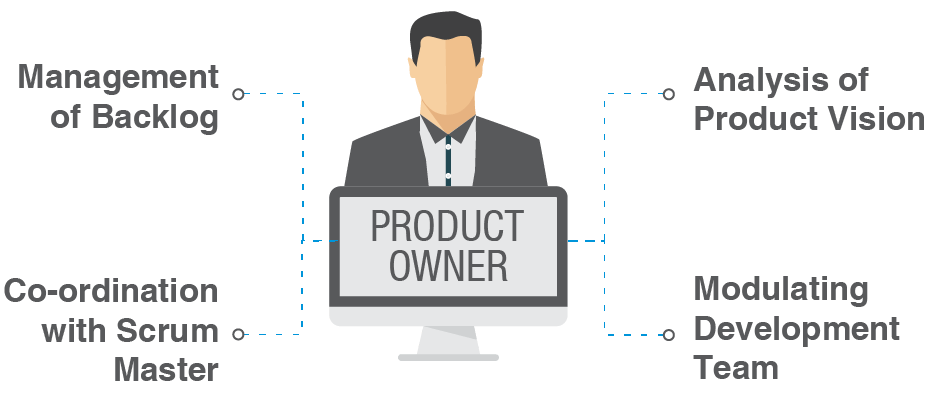
Course Description
The Product Owner represents the interests of the stakeholder community to the Scrum Team. The Product Owner is responsible for ensuring clear communication of product or service functionality requirements to the Scrum Team, defining Acceptance Criteria, and ensuring those criteria are met. The Product Owner must always maintain a dual view. He or she must understand and support the needs and interests of all stakeholders, while also understanding the needs and workings of the Scrum Team. Applicants will be awarded the Scrum Product Owner certificate upon successfully passing the certification exam.
This course methodology is designed by experts with extensive experience in the field of professional training and education. It combines our extensive knowledge of Scrum/Agile with innovative methods of course delivery to provide a practical understanding of Scrum/Agile concepts. We provide flexible learning through online, mobile and physical classes. Our courses are based on a comprehensive guide—A Guide to the Scrum Body of Knowledge (SBOK™ Guide).
The product owner is commonly a lead user of the system or someone from marketing, product management or anyone with a solid understanding of users, the market place, the competition and of future trends for the domain or type of system being developed
This, of course, varies tremendously based on whether the team is developing commercial software, software for internal use, hardware or some other type of product. The key is that the person in the product owner role needs to have a vision for what is to be built.
The product owner role requires an individual with certain skills and traits, including availability, business savvy and communication skills. First, the Scrum product owner needs to be available to his or her team. The best product owners show commitment by doing whatever is necessary to build the best product possible – and that means being actively engaged with their teams.
Introduction:This chapter describes the purpose and framework of the Scrum Guide.
Overview of Agile:This chapter provides an overview of Agile which includes Agile Manifesto; Agile Principles; What has Changed with Agile; Declaration of Interdependence; and Agile Methods—Lean Kanban, Extreme Programming, Crystal Methods, Dynamic Systems Development Method, Feature Driven Development, Test Driven Development, Adaptive Software Development, Agile Unified Process, and Domain Driven Development.
Scrum Overview:This chapter talks about Planning in Scrum, Scrum Framework, Scrum Roles, and Scrum Flow.
Initiate:The Initiate phase includes processes related to initiation of a project—Create Project Vision; Identify Scrum Master and Stakeholder(s); Form Scrum Team; Develop Epic(s); Create Prioritized Product Backlog; and Conduct Release Planning.
Plan & Estimate:The Plan and Estimate phase consists of processes related to planning and estimating tasks which include Create User Stories; Approve, Estimate and Commit User Stories; Create Tasks; Estimate Tasks; and Create Sprint Backlog.
Implement:The Implement phase consists of processes related to execution of tasks and creation of a project’s product. These processes include Create Deliverables; Conduct Daily Standup; and Groom Prioritized Product Backlog.
Review and Retrospect:The Review and Retrospect phase is concerned with reviewing the deliverables created, and determining ways to improve practices and methods used for project execution. The processes related to this phase include Demonstrate and Validate Sprint; and Retrospect Sprint.
Release:The Release phase emphasizes delivering the Accepted Deliverables to the customer and identifying, documenting, and internalizing the lessons learned during the project. The processes related to this phase include Ship Deliverables, and Retrospect Project.
Importance of Value:This chapter talks about Practices for Value-driven Delivery, and Risk Management.
Scrum Implementation:This chapter discusses Scalability of Scrum, and Transition to Scrum.
Exam Format
Pros
Truly say, this an excellent institute, which offering outstanding Scrum Master certification training. I have finished my Scrum Master certification from here with the best study material and now I am placed and working in an MNC company
Cons
Not any particular, i am satisfied
Pros
I studied Big Data Hadoop Certification Training with totaleducator to develop my skills and project on the Hadoop concept. 100% acknowledgment for Big Data and Hadoop course which provided by totaleducator in developing a successful Hadoop developer. Nice Institute and excellence service. I assure everyone that they will not disappoint with totaleducator
Cons
None. i have great Experience.